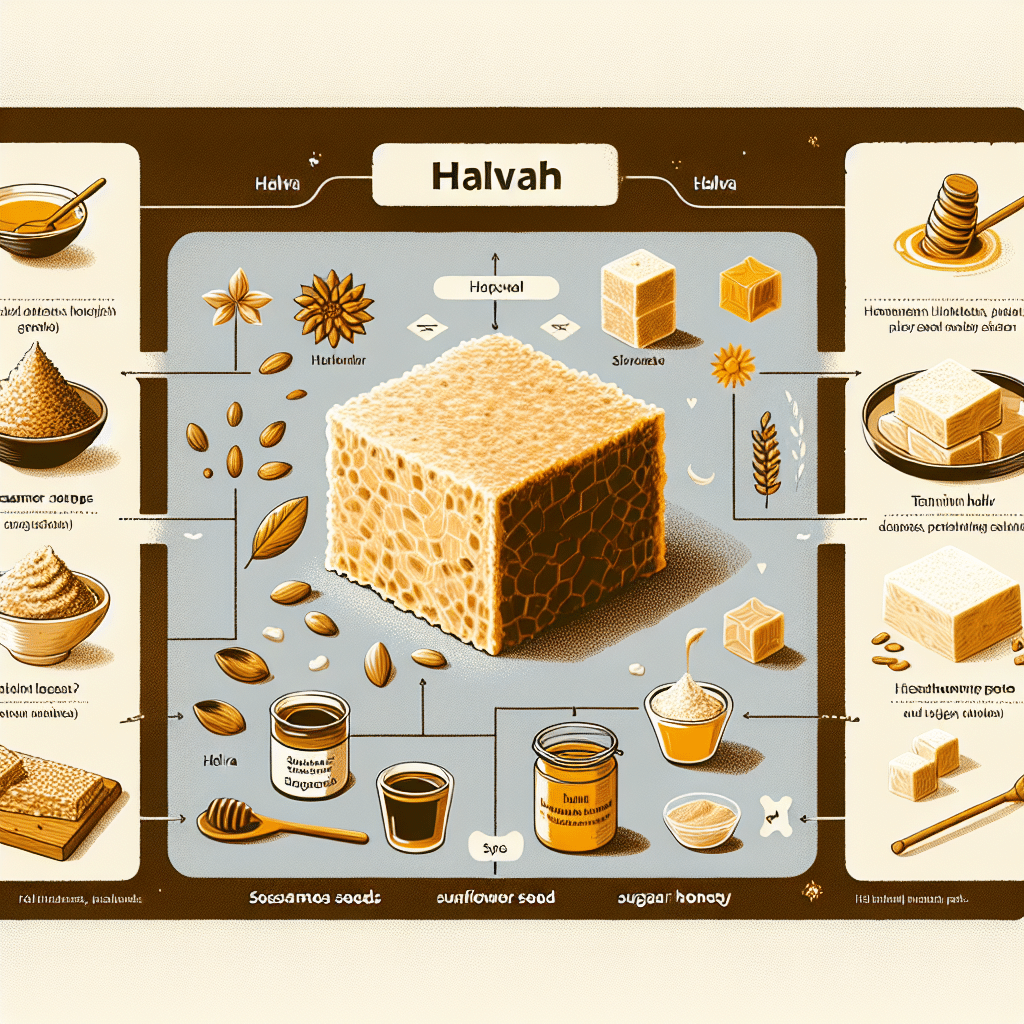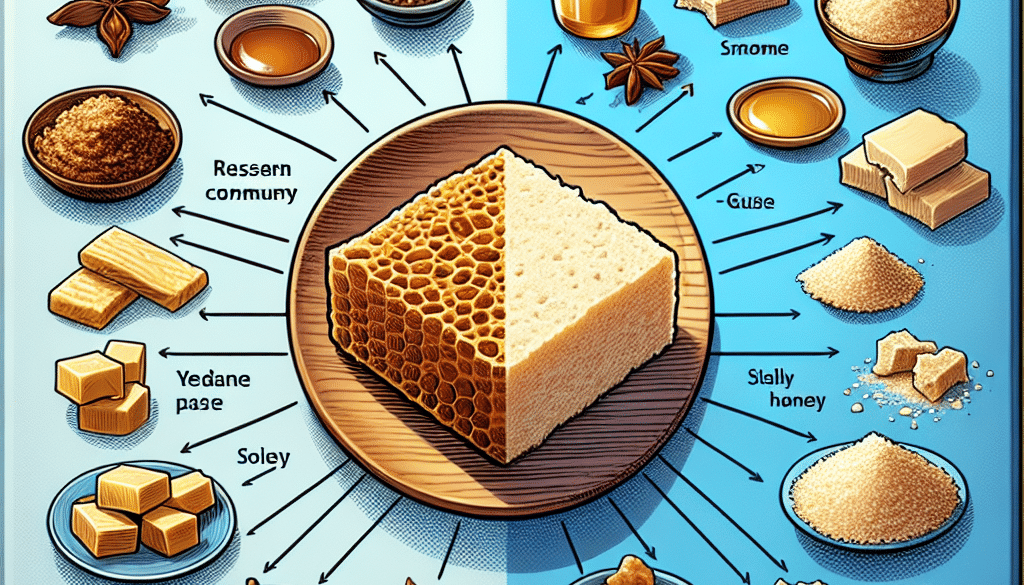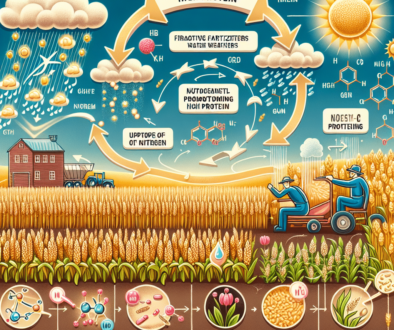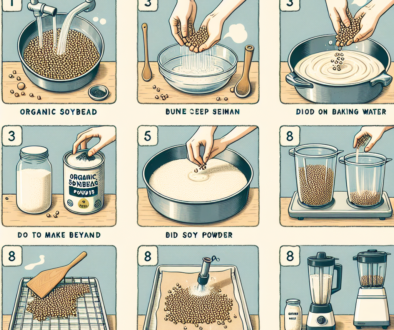What Is The Difference Between Halva And Halvah?
-
Table of Contents
- Halva vs. Halvah: Understanding the Sweet Differences
- The Origins and Cultural Significance of Halva
- Halva: The Sesame-Based Confection
- Halvah: The Flour-Based Delight
- Regional Varieties and Preparation Methods
- Nutritional Value and Uses
- Conclusion: Celebrating Diversity in Confectionery
- Enhance Your Diet with ETprotein’s High-Quality Protein Products
Halva vs. Halvah: Understanding the Sweet Differences

When it comes to sweet confections from the Middle East and surrounding regions, few are as beloved and widespread as halva. However, you may have come across two different spellings: “halva” and “halvah.” While they may seem like mere variations in transliteration, these spellings can sometimes indicate subtle differences in ingredients, preparation, and cultural origins. In this article, we’ll explore the distinctions between halva and halvah, their cultural significance, and how they fit into the broader world of sweets.
The Origins and Cultural Significance of Halva
Before delving into the differences, it’s essential to understand what halva is and its place in various cultures. Halva (also spelled halvah, halwa, aluva, haleweh, and other variations) is a dense, sweet confection with a history that spans many countries, including India, the Middle East, the Balkans, and the Mediterranean region. Its name is derived from the Arabic word “halwa,” which means sweet.
Halva is often made from a base of nut butter or flour, combined with sugar or honey, and sometimes includes additional ingredients like nuts, seeds, or dried fruits. It is enjoyed in various forms across different cultures, often associated with celebrations, religious ceremonies, and everyday indulgence.
Halva: The Sesame-Based Confection
The term “halva” is commonly used to refer to the sesame-based version of the sweet. This type of halva is made primarily from tahini, a paste made from ground sesame seeds, which is mixed with hot sugar syrup to create a fudge-like texture. The mixture is then cooled and cut into blocks or slabs. Here are some characteristics of sesame halva:
- Texture: Sesame halva has a crumbly, dry texture that melts in the mouth.
- Flavor: The flavor is nutty and sweet, with a pronounced sesame taste.
- Variations: It can include additional flavors like vanilla, chocolate, or pistachio.
- Regional popularity: Sesame halva is particularly popular in the Middle East, Eastern Europe, and parts of Asia.
Halvah: The Flour-Based Delight
On the other hand, “halvah” often refers to a version made with a grain-based flour, typically semolina or wheat flour, though there are many regional variations. This type of halva is cooked with clarified butter, sugar or honey, and often spiced with cardamom or saffron. Here’s what sets flour-based halvah apart:
- Texture: Flour-based halvah is generally softer and more gelatinous than its sesame counterpart.
- Flavor: It has a rich, buttery taste with the potential for a wide range of spice-infused flavors.
- Variations: Ingredients like nuts, raisins, or rose water may be added for extra flavor and texture.
- Regional popularity: This type of halvah is commonly found in India, Iran, and other South Asian and Middle Eastern countries.
Regional Varieties and Preparation Methods
Both sesame and flour-based halvas are subject to regional variations that reflect local tastes and available ingredients. For example, in India, halwa can be made with carrots, lentils, or gourds, while in Greece, semolina halva is a traditional Lenten dessert flavored with cinnamon and cloves.
The preparation methods for halva and halvah also differ. Sesame halva requires careful temperature control to prevent the sugar syrup from crystallizing, while flour-based halvah involves roasting the flour in fat to achieve the right consistency and flavor.
Nutritional Value and Uses
Halva and halvah are high in calories and sugar, making them treats to be enjoyed in moderation. However, sesame halva contains healthy fats from the sesame seeds and can be a source of protein and calcium. Flour-based halvah, while also calorie-dense, can offer some nutritional benefits from the nuts and dried fruits often included in its recipes.
Both types of halva can be eaten on their own as a sweet snack or dessert. They can also be crumbled over ice cream, incorporated into pastries, or used as a spread on bread or crackers.
Conclusion: Celebrating Diversity in Confectionery
In conclusion, while “halva” and “halvah” may seem interchangeable, they can represent distinct confections with their own unique textures, flavors, and cultural significance. Whether you prefer the nutty crunch of sesame halva or the rich, spiced softness of flour-based halvah, both sweets offer a delicious glimpse into the culinary traditions of the regions they come from.
The key takeaways from this exploration are the understanding of the base ingredients, the regional preferences that shape each confection, and the celebration of diversity within the world of sweets. Whether you spell it halva or halvah, these treats continue to delight palates around the globe.
Enhance Your Diet with ETprotein’s High-Quality Protein Products
If you’re looking to balance your indulgence in sweets like halva with high-quality protein sources, ETprotein offers a range of organic bulk vegan proteins that can complement any diet. Their products, including organic rice protein, pea protein, and various seed proteins, are non-GMO, allergen-free, and characterized by a neutral taste.
ETprotein’s L-(+)-Ergothioneine (EGT) supplements are also an excellent addition to your health regimen, providing a high-purity form of this naturally occurring amino acid with antioxidant properties. Whether you’re involved in sports nutrition, weight management, or general health and wellness, ETprotein has the protein solutions to meet your needs.
About ETprotein:
ETprotein, a reputable protein and L-(+)-Ergothioneine (EGT) Chinese factory manufacturer and supplier, is renowned for producing, stocking, exporting, and delivering the highest quality organic bulk vegan proteins and L-(+)-Ergothioneine. They include Organic rice protein, clear rice protein, pea protein, clear pea protein, watermelon seed protein, pumpkin seed protein, sunflower seed protein, mung bean protein, peanut protein, and L-(+)-Ergothioneine EGT Pharmaceutical grade, L-(+)-Ergothioneine EGT food grade, L-(+)-Ergothioneine EGT cosmetic grade, L-(+)-Ergothioneine EGT reference grade and L-(+)-Ergothioneine EGT standard. Their offerings, characterized by a neutral taste, non-GMO, allergen-free attributes, with L-(+)-Ergothioneine purity over 98%, 99%, cater to a diverse range of industries. They serve nutraceutical, pharmaceutical, cosmeceutical, veterinary, as well as food and beverage finished product distributors, traders, and manufacturers across Europe, USA, Canada, Australia, Thailand, Japan, Korea, Brazil, and Chile, among others.
ETprotein specialization includes exporting and delivering tailor-made protein powder and finished nutritional supplements. Their extensive product range covers sectors like Food and Beverage, Sports Nutrition, Weight Management, Dietary Supplements, Health and Wellness Products, and Infant Formula, ensuring comprehensive solutions to meet all your protein needs.
As a trusted company by leading global food and beverage brands and Fortune 500 companies, ETprotein reinforces China’s reputation in the global arena. For more information or to sample their products, please contact them and email sales(at)ETprotein.com today.












